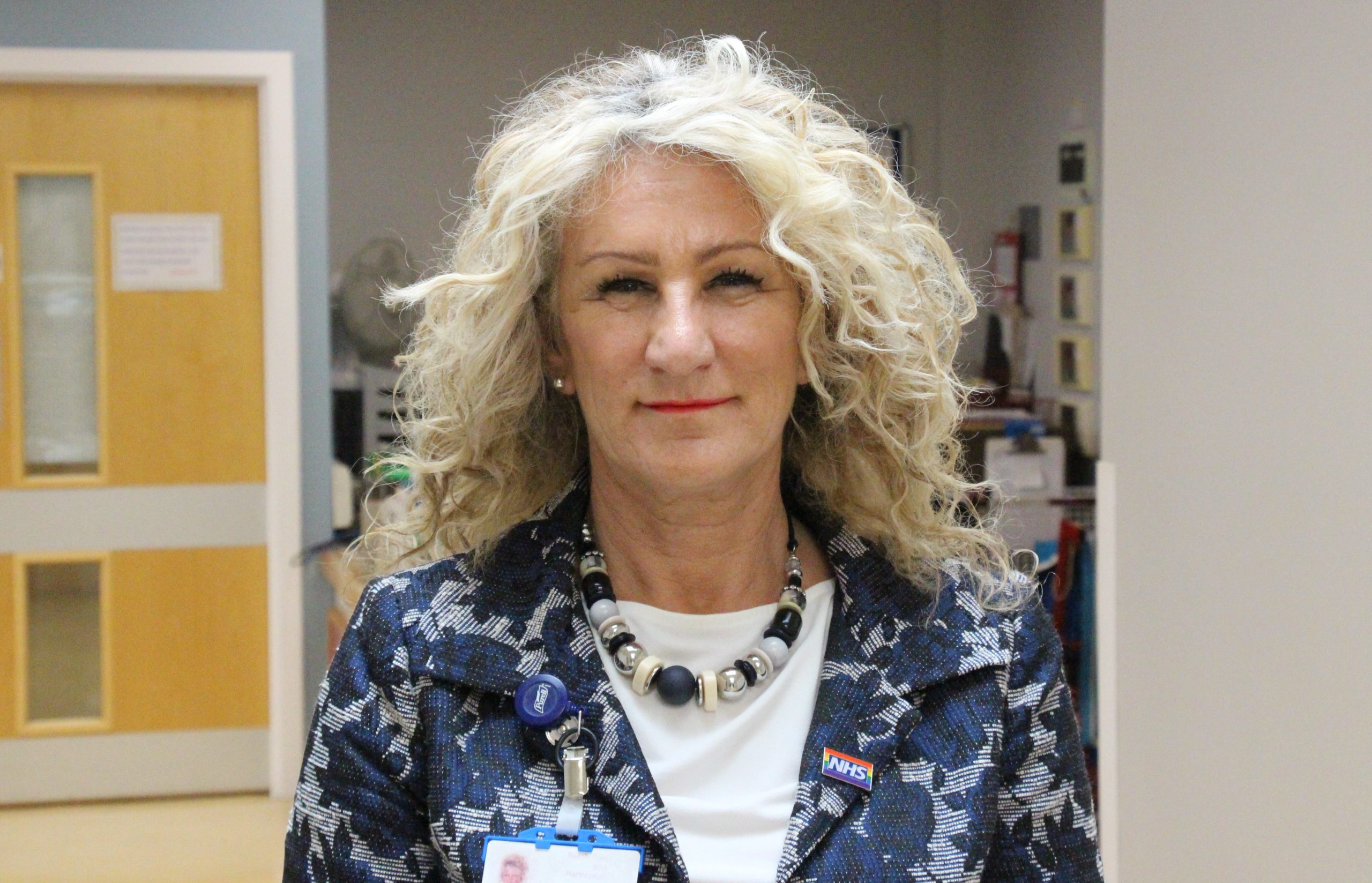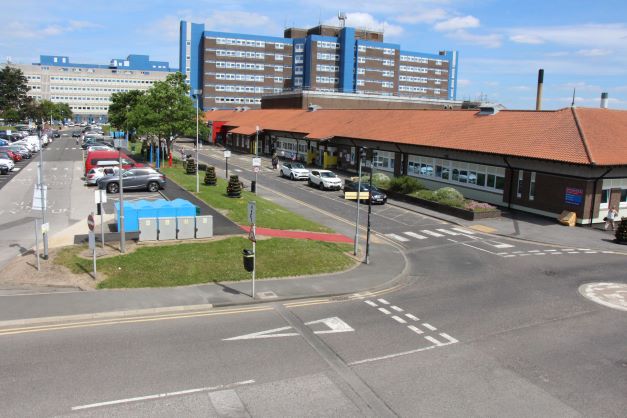Theory to reality: targeting health inequality in the North East

Hospital Times speaks to Julie Gillon, Chief Executive of North Tees and Hartlepool NHS Foundation Trust, on how the local ICS is taking practical steps to address health inequality in the North East of England.
Health inequality is a more than oft repeated phrase in healthcare these days, take a look at the websites of any of England’s 42 integrated care systems (ICSs) and you will find health inequality to be front and centre of system priorities. But the reality facing the population of North East and North Cumbria Integrated Care System (serving some 3.2 million people) make addressing disparities in health outcomes a critical objective.
Local system providers have been candid about the challenges facing the region. Startling observations were made at a local health inequalities summit for the ICS in January, where it was noted that life expectancy for men in the region is comparable to that of men in the 1950s and emergency care attendees are also above the national average. Cancer rates and preventable mortality are higher than any other region in the country and the region has the second highest rate for cardiovascular disease and liver disease, as well as being 42 per cent above national average for respiratory conditions.
“Without tackling the disease burden that underlines health inequality, health providers will not survive”
Curiously, the region is facing these challenges while the quality of its health and care services are consistently rated amongst the best in the country. The North Tees and Hartlepool NHS Foundation Trust, for instance, has maintained consistently ‘good’ ratings across the board in recent CQC inspections. Despite this, the ICS is still finding pockets of worsening deprivation and disease across the region. “It is becoming abundantly clear that, without tackling the disease burden that underlines health inequality, health providers will not survive,” says North Tees and Hartlepool NHS Foundation Trust Chief Executive Julie Gillon (pictured above).
Julie, who has led North Tees and Hartlepool NHS Foundation Trust since July 2019, assumed the position of Senior Responsible Officer (SRO) for Health Inequalities for the North Cumbria region last year. Her approach to targeting health inequality is rooted in improved public engagement, enhanced communications and improving systemic understanding of health metrics with clearer accountability and governance structures.
Making every contact count
With so much of the ICS population health approach defined by personal lifestyle choices (smoking, diet, nutrition and exercise, etc.), citizens must be empowered to take control over their health. Julie insists that, despite widespread attention given to the issue of health inequality in the health sector, understanding of what health inequality actually means to the individual remains poor. Complicating this task for North East and North Cumbria ICS is the fact that 50 per cent of the region’s population have a reading age of nine.
“Health inequality is as much about lifestyle choices as it is about healthcare, economic regeneration, and social inclusion”
“It has proven to be difficult, from both a system and public perception point of view, to enhance understanding of health inequalities,” says Julie, “which has made establishing metrics for success extremely difficult.
“Health inequality is as much about lifestyle choices as it is about healthcare, economic regeneration, and social inclusion. The public must be given the information they need to be able to take personal responsibility for their actions. If they are not able to do so, then making every contact with the health service count, which is the job of the health sector, becomes futile.”
‘Making every contact count’ is an evidenced-based approach to improving the population’s health and wellbeing by prompting behavioural changes whenever people interact with the health system. The approach enables health and care workers to engage people in conversations about improving their health by addressing risk factors such as alcohol, diet, physical activity, smoking and mental wellbeing. Julie identifies this as a critical approach to tackling health inequality and calls for health providers to improve the way health inequality is communicated as an issue.
Theory into practice
It is Julie’s belief that ignorance around health inequality from certain parts of the sector is partly due to a lack of tangibility with which solutions are discussed. She suggests that “there is often a tendency to overtheorize the issue. The reality of the acute sector is that when things start to become overtheorized, they tend to lose [their] interest and traction, making reform extremely difficult.
“What we can do as a system is whittle the issue down to a few more simplistic factors, laying down some tangible realities that we can measure, then it can become more understandable to a wider group of people.”

A key part of the SRO role that Julie has taken is to bridge this gap and showcase the real impact health inequality has upon people’s lives. At January’s health inequality summit, Julie’s team gave the floor to recovering drug addicts who were able to explain how receiving equitable healthcare service access has improved their lives in real terms. “We also had presentations from people with learning disabilities, who were telling us how enhanced service communication has helped them better understand the symptoms of cancer and how that prevented worsening of cancer, or potentially the stage of cancer, by early recognition.”
“This is not just about regions; it is about postcodes and specific disease profiles”
It is hoped that practical examples will lead to practical solutions, and during January’s summit several propositions were put forward to better understand the scale of the task. Among the ideas discussed was the Townsend index approach, a measure and score of deprivation looking at four variables: unemployment, non-car ownership, non-home ownership and household overcrowding. The second proposition was about ‘allostatic load’ – which examines the cumulative burden of chronic stress and life events.
“Historically, you have sets of data that you understand, such as the number of emergency admissions, commissioning and available money. But what is never taken into account is the burden that a specific disease has upon the system, as well as the health inequalities impact upon the organisation.
“As a system we must improve our understanding and approaches to data which tells us what the disease burden, and the burden of health inequalities, is upon the system – only then can you tackle issues around equitable access.
“This could be ascertaining how and where resources can be targeted to improve access to learning disability services in a locality or how you can target race towards respiratory disease or heart disease, or indeed partner with GPs to look at a whole pathway or a whole population.”
With clear accountabilities come clear metrics
As ICSs approach statutory footing on July 1, there are still concerns as to whether governance frameworks and leadership accountabilities will be there to ensure ICSs can tackle a problem of the scale and complexity of health inequality. As Julie explains, “this is as much about leadership and capability as it is about metrics.
“There is a greater system oversight framework around health inequalities and integration than there was a few years ago, but there are ongoing challenges around managing these different accountabilities.
“There are still NHS trusts with statutory standings, but you also have accountable officers in foundation trusts who are accountable nationally to the secretary of state for the delivery of performance – which will not change when the Health and Care Act passes into law – this makes a movement towards system metrics or measures around improvement on health inequalities extremely difficult.”
However, solutions must be found. As Julie reflects, “we owe it to our society to change. This is a movement. Leaders from across our region are coming together and demanding change. It is down to us all to help drive this forward and correct the national injustice of health inequality.”
